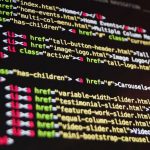For years, we’ve watched local journalism efforts wither and news deserts form, leaving a growing list of critical stories uncovered. We’ve chronicled those losses, and chewed them over in conferences and white papers too numerous to mention. Yet inertia reigned—partly because the problem, in its scale and financial depth, seemed nearly unfixable.
Now, we may have finally arrived at a moment of reckoning with the problem. The two giant, intertwined stories of this spring—the coronavirus pandemic and the uprisings across the country in response to police brutality and killings of Black people—have provided the kind of dramatic illustration of the need for local news that could, finally, move us out the talk phase.
Throughout the health crisis, local reporters have chased answers to fundamental questions— where the virus is surging, which hospitals are filling to capacity, what school-district rules were changing—that proved to be, quite literally, matters of life and death. So, too, with police violence, where urgent, on-the-ground accountability reporting—to challenge official narratives, monitor the status of internal investigations, and surface the track records of local prosecutors—gave important context to civil-rights protests in the streets.
That it took two such massive disruptions to finally focus attention on the local-news crisis speaks to its complexity, but that focus is now here. Funders, legacy news organizations, academics, and others see a new urgency in addressing a problem that will only be made more clear by this fall’s presidential election and its inevitable fallout. What will voting look like on the ground?





